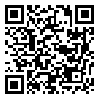دوره 10، شماره 1 - ( 12-1403 )
جلد 10 شماره 1 صفحات 39-34 |
برگشت به فهرست نسخه ها
Ethics code: R.IAU.KHUISF.REC.1402.262
Download citation:
BibTeX | RIS | EndNote | Medlars | ProCite | Reference Manager | RefWorks
Send citation to:



BibTeX | RIS | EndNote | Medlars | ProCite | Reference Manager | RefWorks
Send citation to:
Mosadeghian S, Torkzadeh A, Ranjbarian P, Asaadi R. Position of Second Mesiobuccal Canal Relative to Distobuccal and Palatal Canals of Maxillary Molars in an Iranian Population. J Res Dent Maxillofac Sci 2025; 10 (1) :34-39
URL: http://jrdms.dentaliau.ac.ir/article-1-703-fa.html
URL: http://jrdms.dentaliau.ac.ir/article-1-703-fa.html
Position of Second Mesiobuccal Canal Relative to Distobuccal and Palatal Canals of Maxillary Molars in an Iranian Population. . 1403; 10 (1) :34-39
چکیده: (1324 مشاهده)
Background and Aim: This study assessed the position of the second mesiobuccal (MB2) canal relative to the distobuccal (DB) and palatal (P) canals of maxillary molars in an Iranian population using cone-beam computed tomography (CBCT).
Materials and Methods: This cross-sectional study evaluated 110 CBCT scans of patients retrieved from a radiology clinic in Isfahan, Iran. The MB1-MB2 inter-orifice distance, and the angle formed between the MB1-MB2 line and the DB-P line were measured on reconstructed axial sections. The angulation of MB2 orifice relative to the DB and P canals was categorized as positive, negative, and parallel. Data were compared by Student t-test, Fisher’s exact test, and Chi-square test (alpha=0.05).
Results: The mean MB1-MB2 inter-orifice distance was not significantly different in first and second molars, in the right and left sides, or in males and females (P>0.05). Negative angulation of MB2 orifice relative to the DB and P canals had the highest frequency (72.7%) followed by positive angulation (23.6%). Angulation of MB2 orifice had no significant correlation with tooth type (first/second molar), laterality, or gender (P>0.05).
Conclusion: The mean MB1-MB2 inter-orifice distance had no significant correlation with tooth type, laterality, or gender. Negative angulation of the MB2 relative to the DB and P canals had the highest frequency, indicating that if a hypothetical line is drawn from the MB1 orifice parallel to the DB-P line, the MB2 orifice would be probably at the distal of this line. Angulation of MB2 orifice had no significant correlation with tooth type, laterality, or gender.
Materials and Methods: This cross-sectional study evaluated 110 CBCT scans of patients retrieved from a radiology clinic in Isfahan, Iran. The MB1-MB2 inter-orifice distance, and the angle formed between the MB1-MB2 line and the DB-P line were measured on reconstructed axial sections. The angulation of MB2 orifice relative to the DB and P canals was categorized as positive, negative, and parallel. Data were compared by Student t-test, Fisher’s exact test, and Chi-square test (alpha=0.05).
Results: The mean MB1-MB2 inter-orifice distance was not significantly different in first and second molars, in the right and left sides, or in males and females (P>0.05). Negative angulation of MB2 orifice relative to the DB and P canals had the highest frequency (72.7%) followed by positive angulation (23.6%). Angulation of MB2 orifice had no significant correlation with tooth type (first/second molar), laterality, or gender (P>0.05).
Conclusion: The mean MB1-MB2 inter-orifice distance had no significant correlation with tooth type, laterality, or gender. Negative angulation of the MB2 relative to the DB and P canals had the highest frequency, indicating that if a hypothetical line is drawn from the MB1 orifice parallel to the DB-P line, the MB2 orifice would be probably at the distal of this line. Angulation of MB2 orifice had no significant correlation with tooth type, laterality, or gender.
نوع مطالعه: Original article |
موضوع مقاله:
Endodontics
| بازنشر اطلاعات | |
 |
این مقاله تحت شرایط Creative Commons Attribution-NonCommercial 4.0 International License قابل بازنشر است. |




